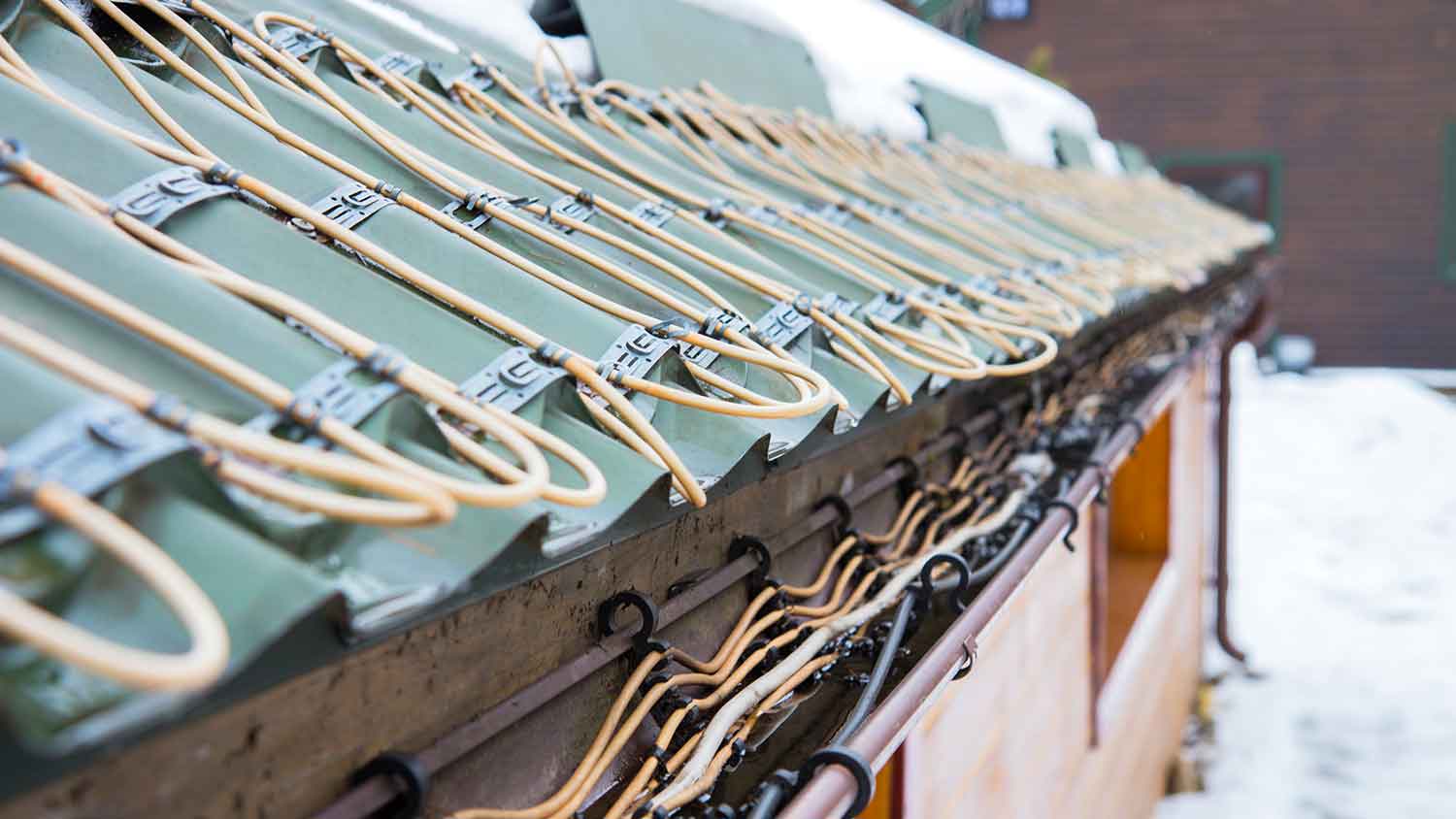Who Installs Roof Heat Cables?
Hire a roofer to safely and correctly install your roof heat cable


Snow and ice may be beautiful to look at when you’re warm and safe inside your home, but when those winter wonders are accumulating on your roof, they’re anything but welcome. Roof heat cables can help keep ice and snow buildup from damaging your roof, gutters, and downspouts, but this is a project for which you may want to hire a roofer for safety’s sake.
Benefits of Hiring a Roofer to Install Roof Heat Cables

Roof heat cables are just what they sound like—cables that heat up on and around your roof to heat your gutters and downspouts to keep them clear for proper drainage. There are two main kinds of roof heat cables: self-regulating, which adjust their heat output based on the outdoor temperature, and manual, which give off a consistent amount of heat once switched on. When it comes to installing roof heat cables, hiring a local roofer is the best way to ensure your safety.
Prevent Ice Dams
Removing snow from the roof can be challenging, so it’s often safer and easier to wait for it to melt. Ice dams form when partially melted snow and ice refreeze close to the edge of the roof, forcing water under the shingles and leading to interior leaks and roof damage. Properly installed heat cables prevent this refreezing, allowing snow and ice to continue melting and drain off via the gutters and downspouts.
It’s better to prevent ice dams than to remove them since professional ice dam removal can be costly, and removing ice dams on your own can be tricky and unsafe in cold, slippery conditions.
Avoid Ladder Mishaps
Any roof work poses a safety risk to homeowners. Climbing a ladder, walking on the roof, and using tools while precariously balanced high off the ground can be a recipe for disaster. A professional roofer will be able to install your heat cable safely and without you having to risk a bad fall.
Safe Installation
Electricity and the elements can be a dangerous combination. A roofer will not only be able to select the safest product to use but will ensure it’s installed correctly to avoid the risk of fire and roof or gutter damage.
Can I DIY Installing Roof Heat Cables?
A handy homeowner with plenty of experience with roof work can install roof heat cables, but if you aren’t completely comfortable on a ladder or working on your roof, it’s best to call in a pro. If you do choose to DIY this project, ensure the heat cables you’re using are designed for use outdoors on roofs and that the cables are plugged into a GFCI-rated outdoor outlet. You’ll also need to be careful when clipping the cables onto your roof, or you could cause costly damage to your shingles or gutters.
Can I Hire a Handyperson to Install Roof Heat Cables?
A handyperson may be able to install roof heat cables, but you’ll want to be sure of your liability in the case of a fall or injury while working on a ladder. Professional roofers are licensed and insured to cover accidents on the job, while a handyperson might not be. You may want to hire a roofer for your own peace of mind.
How Does a Roofer Install Roof Heat Cables?
Your roofer will start the heat cable installation process by measuring your roofline, eaves, and downspouts to determine how much cable they’ll need for the job. They’ll then begin at the outdoor outlet, run the cable up to the edge of the roof overhang, and use a clip to attach it to a shingle.
From there, the roofer will zigzag the cable from the edge of the roof partially into the gutter, maximizing the space covered by the cable. After the cable has been attached to the length of the roofline, the roofer will run the cable through the gutters and downspouts to ensure they’re kept clear for proper drainage. Finally, they’ll plug the cable in to test it, then unplug it so it’s ready to use when the flakes start falling.





- Roofers
- Metal Roofing
- Roof Repair
- Roof Inspection
- Vinyl Siding Repair Contractors
- Flat Roofing Companies
- Commercial Roofing
- Emergency Roofing Companies
- Leaky Roof Repair
- Metal Roof Repair
- Business Roof Repair
- Flat Roof Repair
- Tile Roof Repair
- Slate Roofers
- Rubber Roofers
- Roofing & Siding
- Metal Roof Installation
- Affordable Roofing
- Roof Sealing
- Attic Ventilation Contractors
- Are Roof Heat Cables Dangerous? What You Should Know
- How to Prevent Ice Dams From Forming on Your Roof
- 9 Ways to Help Your Roof Last Longer
- 11 Roof Maintenance Tips for Homeowners
- Protect Your Roof From the Snow With These Roof Winterizing Tips
- Do Gutters Cause Ice Dams to Form?
- 9 Warning Signs You Need a New Roof
- What Causes Ice Dams to Form on Your Roof
- Explore the Pros and Cons of Roof Cleaning
- 15 Common Roof Issues You Shouldn’t Ignore and How They’re Fixed










